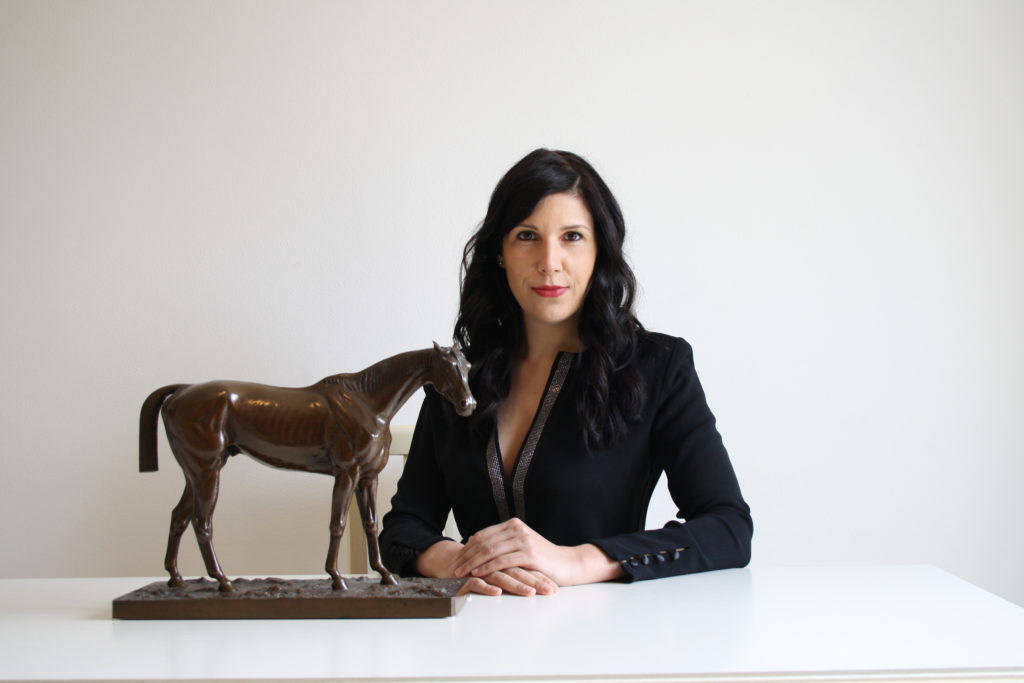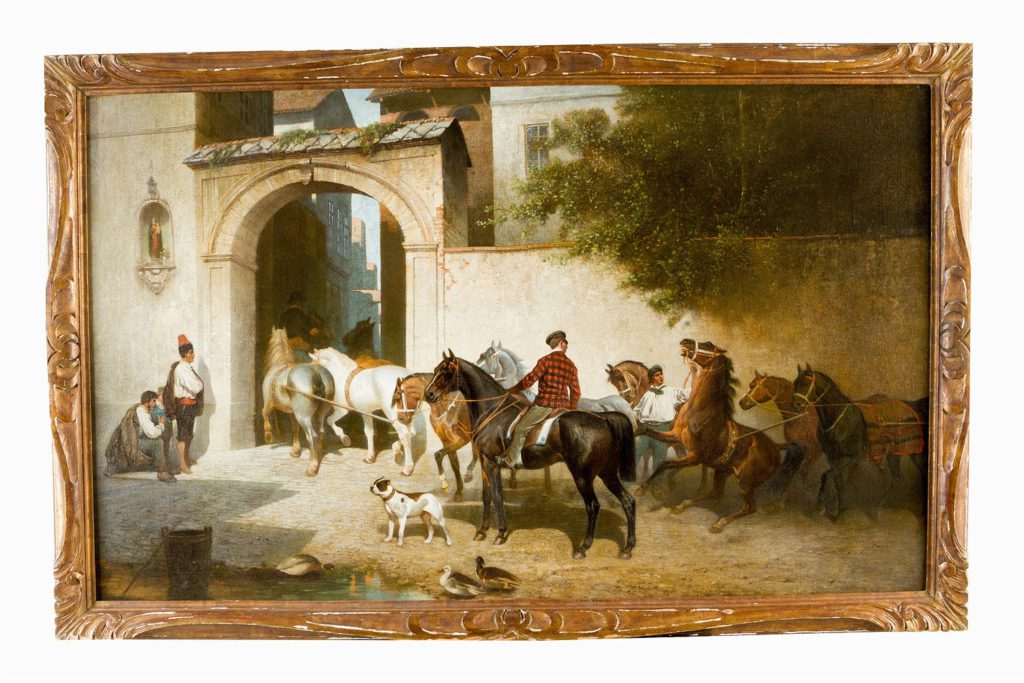This is Valeria Ricci, Antiquarian of the R.V. Art Gallery Studio.
Five questions to get a preview of the great art professionals, the daily challenges they face, the choices that have determined their path in the system and in the art market, the changes in the name of digital and advice for those who want to pursue the same career in collaboration with ProfessioneARTE.it
_____________________________
Art was in her destiny, a family passion that became a profession to love.
Right from the start, for Valeria Ricci, a very young antiques dealer, that world linked to the past has become her present and her future.
With passion, study, dedication and intuition Valeria has taken over the reins of the gallery founded in the eighties, a handover that has led her not only to carry on the family project, but to develop within it a new sector such as Animal Art.
In this interview Valeria Ricci reveals the world of antiques, hers, made of a lot of study and professionalism, attention to detail and a new generation of antique dealers to keep an eye on…
_____________________________
BIOGRAFIA

Valeria Ricci, Antiquarian and Director of R.V. Art Gallery Studio continues the family tradition that boasts over thirty years of experience in the antiquarian sector with the participation in major national exhibitions (Bergamo Antiquaria, Villa Castelbarco in Vaprio d’Adda, Rassegna Antiquaria Montichiari , Modena Antiquaria, Parma Mercante).
The only gallery in Italy specialized in the genre of vintage animalier, it deals with Painting and Sculpture on an international level from the 18th century to the beginning of the 20th century.
The gallery also carries out research on artists considered to be “minor” in collaboration with English, German, Dutch and French scholars and experts where the animalier sector is more widespread.
Valeria Ricci is part of the Associazione Giovani Antiquari Milanesi.
_________________________
1) How did your path in the art world start?
My path in the art world was marked and coincides with the “first steps” in real life.
It all started when my parents, passionate collectors and lovers of antiques, opened the gallery in the 1980s, projecting their experience into this field.
A sort of ancestral imprinting, from which I have never been completely detached, despite the studies undertaken, supported by a boundless love for animals, led me to realize a professional profile with a naturalistic theme.
I soon realized that the combination of these deep passions would introduce significant changes, bringing innovation to the gallery’s taste and future artistic choices.
The ‘official debut takes place in 2011, when I decide to take over the management responsibility of the gallery independently, which from that moment will be called R.V. Art Gallery Studio, literally taking “in hand the reins” of the organization at 360 degrees.
The ambitious and perhaps daring project, also included the development of a new sector dedicated to the art Animalier, to complement the selection of works consolidated by the family tradition, which over time will be confirmed as a primary specialization of research and cultural deepening, as well as national reference point that feeds a renewed collecting in constant growth.
The world of Animalier Art is in fact completely forgotten by the Italian market, but very much in vogue, with a deep and established artistic tradition in Europe.
Italy can boast several important names, which have nothing to envy to their foreign colleagues, for technical quality, artistic sensitivity and expressive charge of the subjects represented.

2) How would you describe your profession today?
My profession today, like all sectors that cater to a demanding public, requires skills in line with an evolutionary process.
The main qualities required are: professionalism, commitment, passion, skills, constant updating and deepening not only in the field of specialization undertaken, but we must put ourselves in a “mood of open-minded player” because it is the only way to stand out and make a difference, showing a valid and consolidated professional reality.
Antiques still have a lot to tell.
Aware of the appeal it exerts on the art system, it does not tend to suffer, nor does it show itself inclined to the fashion of the moment, but it needs awareness in order to be re-evaluated and appreciated as it deserves.
I think that the most fascinating aspect, a reason for prestige and professional growth is the part dedicated to research: documenting, studying, consulting, buying historical publications, translating texts, monographs, leafing through the catalogues of dated exhibitions, getting in touch with Foundations and Museums, repositioning artists who have not had the right recognition in their time, creating synergies, partnerships and collaborations is a source of satisfaction, growth and personal affirmation.
3) How has your profession changed over time?
I have witnessed a continuous transformation of my profession, at the beginning with a role as a spectator, then transformed into that of a protagonist as an active operator in the art system, so perhaps I have a vision that takes into account various points of view.
The generation of “sons of art”, of those who, like me, have decided to continue the family business, have realised this change quite rationally, taking a proactive attitude of openness and collaboration.
The term “contamination” doesn’t frighten us, on the contrary we consider it a source of inspiration for the realization of projects and contents with a popular background, to eliminate distances and involve a growing number of fans and collectors.
Three years ago I became a member of the Gruppo Giovani Antiquari Milanesi, which is part of the Associazione Antiquari Milanesi – FIMA.
The spirit of collaboration that distinguishes our associates has contributed to the realization of important events such as the Amart Milano exhibition and new partnerships with museums and institutions, to name but a few. Giovani Museo Poldi Pezzoli, Delegazione Fai Milano, Giovani Museo Bagatti Valsecchi.
4) What impact is digital having in your industry?
Digital in the world of antiques has had a significant impact, so much so that it currently still meets with some resistance in the opinion of many operators.
We all agree that actually seeing a work live in a gallery, visiting an exhibition at a museum generates completely different emotions from leafing through a digital catalogue or taking part in a virtual tour, but in the midst of a health emergency due to Covid19, with an alarming number of cancelled exhibition events, the use of social and other technologies has given the sector the opportunity to maintain a certain visibility, economic agility and new contacts that are fundamental for expanding its marketplace profile.
I wouldn’t leave out the important aspect of sharing a very large amount of content, which has probably brought new generations of fans closer together thanks to a medium that uses a language that is more appropriate and in line with a new segment of the public outside the traditional art system.
These new skills also become part of the curriculum of an antiques dealer who wants to manage their brand in a referential and up-to-date way.
5) What would you recommend to a young person who wants to pursue your profession?
The first piece of advice is to follow your instincts in your style choices to set the trend for the gallery.
The key word for outlining one’s path is “Talent scout”: nowadays dedicating oneself to niche artistic currents means having space to develop one’s own identity, with the aim of bringing forgotten or undervalued realities to light.
The rest of the advice comes from itself: study, study in depth, read a lot, discuss with colleagues, experts and art historians, travel (when possible) and visit exhibitions.
I realize I’m privileged to be doing one of the most beautiful jobs in the world.
A profession, the result of many passions, which allows me to never stop training my spirit of observation, to be immersed in a fascinating context, to meet people aligned with my values, united by love for Art and sensitivity to a lifestyle in harmony with Nature, which is always part of our cultural heritage and must be protected.





